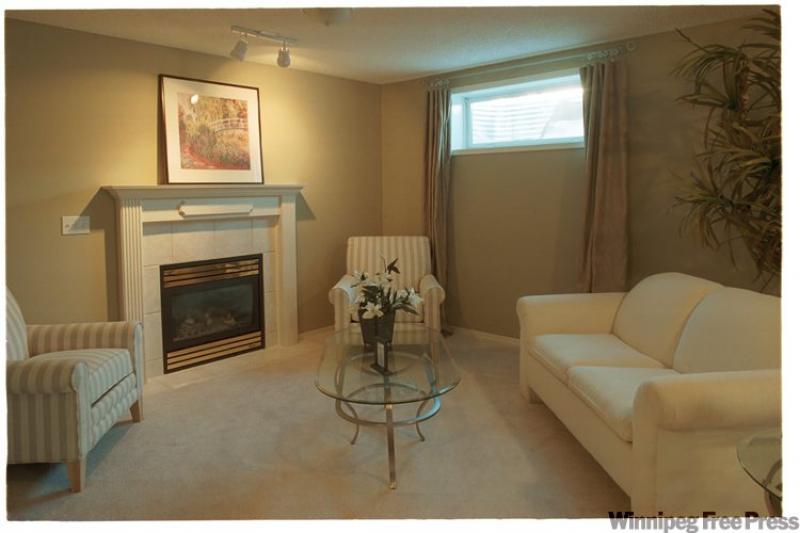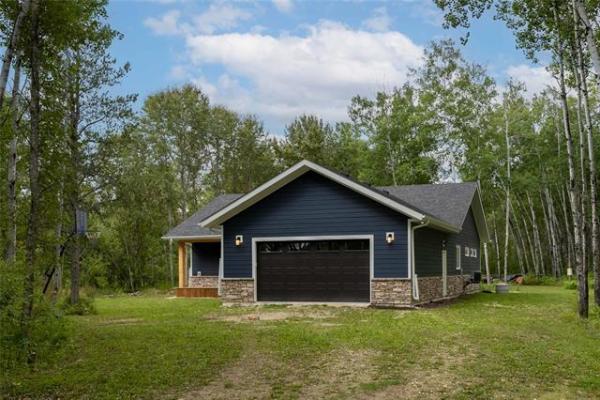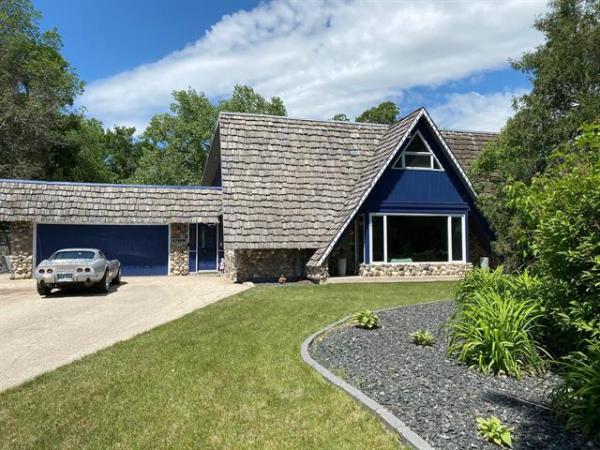Dear Leanne: In our finished basement we have a shared space that incorporates both a games room and family room. There are three windows in this area that are the typical basement window design: small and up high. I would like to do a drapery type of window covering. Do you have any suggestions?
A: Today's basements are an extension of our main living space. Gone are the days of every basement looking like a dingy cellar filled with cobwebs and dank, musty smells. Homeowners are now spending time and effort designing these lower regions with the same thought and care as any other area of their home.
In general, dressing a window is the same process regardless of the level it is on. However, there are a few considerations that should be addressed for basement windows. Windows are included in a home design for light infusion, air flow and safety (a secondary escape route in the case of an emergency).
Basement windows can come in varying sizes depending on the house design and the height of the ceilings in the lower level. You have indicated that yours are high and small, so that will limit some of your options.
You do need to consider the following: the amount of space between the window casing and the ceiling, the depth of the window casing and the wall space between the windows. Although you did not mention the use of blinds or hard window covering, this may be something you should consider for light control.
With window size limiting your options, inside-mount window treatments such as mini or honeycomb blind systems can be installed. The cassettes that hold the mechanisms for these blinds are compact, minimizing the space used compared with other larger blind styles.
The benefit of these blinds is that they control your light as you need and keep the treatment looking clean as it is confined to the window space.
Draperies are very chic in the basement and can be used in conjunction with window blinds or on their own. If you do not use an inside-mount blind system, ensure your drapery panels are lined so that you cannot see the window shape if the fabric is drawn closed during the daytime hours. Drapery use in the basement can provide the illusion of a larger window.
Your drapery options are quite extensive, limited only by wall space available and your design preference. To hang a drapery rod, you will need at least nine centimetres (3.5 inches) of clearance above the casing. You can also use a ceiling-mount traverse rod that attaches directly to the ceiling. If you choose this design, you will need to attach hooks or clips to the drapery; rings or pocket tops will not work without adaptation.
You also need to consider the wall space available beside each window. Draperies need stacking space of at least 20 cm (eight inches) on each side for each panel, so fabric choice and fullness must be considered. For an alternative to the rod treatment, you can attach decorative door pulls (the type used for cabinets and dressers) to a finished wooded panel so that they span the top of the window.
Once the wooden panel is secured above the window, tab- or ring-style drapery panels can be hung, with each tab attached to a single pull. The drapery would stay in a closed position at the top but could be pulled to the side with decorative holders. This is a great look but may limit your ability to use the window as an escape route, so be careful with your selection. When it comes to length of panels, I suggest a to-the-floor length if you have bare walls. Shorter lengths work if you have wainscotting or wall units or furniture below the windows.
Dear Leanne: We are renovating the ensuite off of our master bedroom and would like your thoughts on sink and countertop options. We currently have a pistachio-coloured glass tile surrounding our white tub. We were hoping to make this room stunning and wondered if we had to pick white sinks since the tub is white?
A: The tile colour is a great place to start. You have a lot of options but the two that stand out for me are to go with the spa effect of white, or the bold look of black. Green and white have historically evoked a sense of serenity.
The green ocean waves leaving a froth of white foam on the sand is an image many of us dream of.
If white was not what you wanted, imagine the same image, but with the green and white froth settling on black sand. To create a dramatic style, consider a black-glass, upper-mount vessel. If you can obtain more of the pistachio tile you can have a custom-made pedestal hold the vessel and incorporate the tile at the same time.
Keep the mirror design simple and the fixtures chrome. Bring in a free-standing piece of black furniture to house your toiletries. If it doesn't come in black, just paint it. Keep your accessories black or pistachio green. This will have a classic and sophisticated feel without being too trendy.
-- Canwest News Service
Leanne Brownoff is an Edmonton interior design consultant who welcomes your questions at www.leannebrownoff.com




